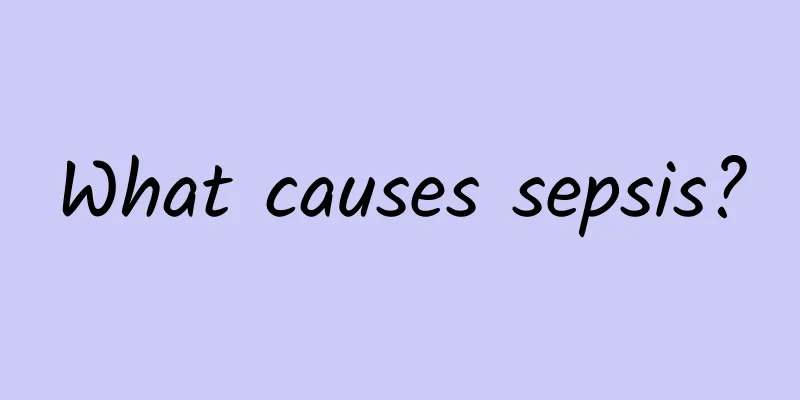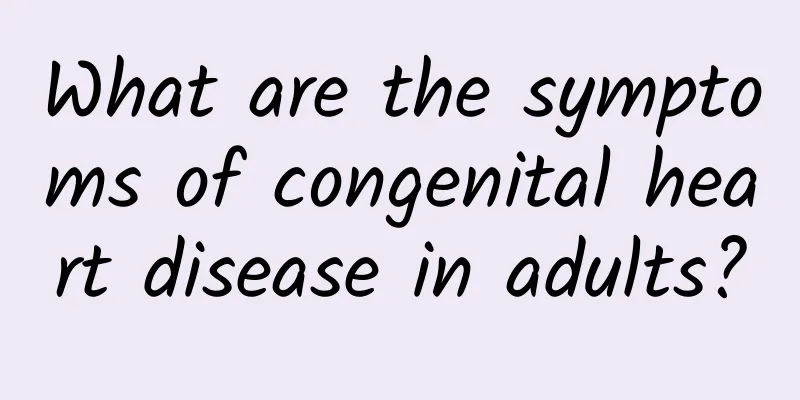What causes sepsis?

|
Sepsis can cause great harm to the human body. The main cause of sepsis is that after a person suffers severe trauma, purulent infection occurs in the wound, resulting in sepsis. Sepsis can be treated through certain methods, and in order to prevent recurrence of the disease or to prevent the occurrence of the disease, sepsis patients can also prevent sepsis through certain methods! 1. Causes Infections usually occur after severe trauma and various purulent infections, such as extensive burns, open fractures, carbuncles, diffuse peritonitis, biliary or urinary tract infections, etc. The incomplete localization of the infection lesions allows highly virulent pathogens and toxins to continuously invade the blood circulation. Local and systemic infections trigger the production and release of a large number of inflammatory mediators, stimulating a systemic inflammatory response and causing sepsis. There are many types of common pathogens that cause sepsis: Gram-positive bacteria include Staphylococcus aureus, Streptococcus pyogenes, Staphylococcus epidermidis, enterococci (fecal streptococci, enterococcus faecium), etc.; Gram-negative bacteria include Escherichia coli, Pseudomonas aeruginosa, Enterobacter, Proteus, Klebsiella, etc.; common anaerobic bacteria include Bacillus fragilis, Clostridium, anaerobic Staphylococcus and anaerobic Streptococcus, etc.; fungi include Candida, Aspergillus, Mucor, etc. Various bacteria can produce or contain toxic substances that can activate host immune cells to release inflammatory mediators. Gram-negative bacteria mainly produce lipopolysaccharide (LPS) endotoxins, while Gram-positive bacteria produce peptidoglycan and teichoic acid. Other bacterial cell wall products and antigens, such as fungal mannan, can stimulate inflammatory responses and SIRS. The massive production of inflammatory mediators causes extensive endothelial inflammatory changes, changes in the coagulation and fibrinolytic systems, vascular tone regulation, and cardiac inhibition, leading to microcirculatory disorders and tissue hypoperfusion, causing damage to the microvascular endothelium and perivascular tissues. In addition to direct damage to end organs by toxins and inflammatory mediators, vascular damage induced by inflammatory mediators leading to systemic or local blood flow abnormalities can also cause organ dysfunction. 2. Treatment Methods 1. Early resuscitation For patients with severe sepsis who have hypotension or elevated blood lactate, resuscitation should be started immediately, using crystalloid or colloid fluids for volume expansion therapy. The goal of volume therapy is to achieve a central venous pressure of 8 to 12 mmHg and an hourly urine output of more than 0.5 ml/(kg·h). If necessary, give intravenous drip of norepinephrine, dopamine, etc., and place an arterial pressure measuring tube to maintain the mean arterial pressure above 65 mmHg and the mixed venous oxygen saturation above 65%. Patients with septic shock who do not respond to volume expansion and vasoactive drug therapy can be given low-dose hydrocortisone (≤ 300 mg/d) by intravenous drip. 2. Application of Antimicrobial Drugs Administer antibiotics intravenously as early as possible and perform corresponding cultures of pathogens before taking the drugs. Broad-spectrum antibiotics or combination drugs are usually used. The dosage should be sufficient and the antibiotics should be able to penetrate to the source of infection. Evaluate the treatment effect daily and adjust the treatment plan according to the evolution of the disease, bacterial culture and drug sensitivity results. Effective anti-infection treatment for sepsis usually lasts for 7 to 10 days. Stop the medication after the body temperature drops, the white blood cell count returns to normal, the condition improves, and the local lesions are controlled. 3. Take “source control” measures After initial resuscitation, identify the site of infection as soon as possible and take appropriate source control measures. In cases of sepsis caused by intravenous catheter infection, the catheter can be removed. Intra-abdominal abscesses should be drained promptly, and secondary acute peritonitis and suppurative cholangitis should be treated with surgery promptly. Taking peritonitis caused by gastrointestinal perforation as an example, if no surgical intervention measures are taken, the mortality rate is over 40%, while the mortality rate is less than 5% if effective source control is combined with antibiotic treatment. It can be seen that source control measures are important for improving the prognosis of patients with surgical sepsis. 4. Other adjuvant treatments If hemoglobin is lower than 70 g/L, blood transfusion should be given. Oxygen inhalation or protective low tidal volume (6 ml/kg body weight) pulmonary assisted ventilation helps maintain oxygen supply and tissue perfusion, improve respiratory function, and reduce the occurrence and development of organ dysfunction. Intravenous insulin is used to control hyperglycemia in severe sepsis; proton pump inhibitors are used to prevent stress ulcers. Activated protein C has been used abroad to treat severe sepsis with organ dysfunction. III. Prevention and Control Measures Actively treat primary infection lesions and use antibiotics rationally; for long-term intravenous catheterization and urinary catheterization, local skin cleaning and disinfection should be strengthened. Patients who use glucocorticoids, immunosuppressants and anti-cancer drugs for a long time have low disease resistance. While strengthening nutrition and improving physical fitness, they should also carry out protective isolation. |
<<: What is the best time to count fetal movements?
Recommend
What are the dangers of the kneeling method?
Many people choose to kneel on their knees to los...
What to do if acne breaks out on the chin
Many women will be very troubled when they hear t...
Treatment for vertigo caused by the ears? These 3 methods are the key
There are many causes of vertigo, and ear discomf...
What causes a stuffy nose?
Have we all experienced a stuffy nose, especially...
Ice Silkworm Herbal Cream
The ice silkworm herbal plaster contains ice silk...
Chinese patent medicine for treating impotence
Impotence is the thing that men fear the most. If...
Contraindications and side effects of American ginseng
Ginseng is known as the "king of herbs"...
Causes of hemoptysis due to bronchiectasis, severe cases require treatment
The most common cause of hemoptysis is bronchiect...
Peripheral nervous system
The peripheral nervous system is the system in th...
Can I get vaccinated if I have eczema on my face?
Vaccination has become a very common thing. Every...
Effects and functions of calcined mother-of-pearl
Pearls can be said to be treasures, because their...
Location of the inguinal ligament
The groin is a relatively important part of our h...
Scutellaria baicalensis for bad breath
There should be many treatments for bad breath, s...
What is the reason for sudden bleeding?
Blood in the stool is also called hematochezia. T...
If you understand the word "play", you can live as long as the sky
Life from youth to old age is an irresistible law...









